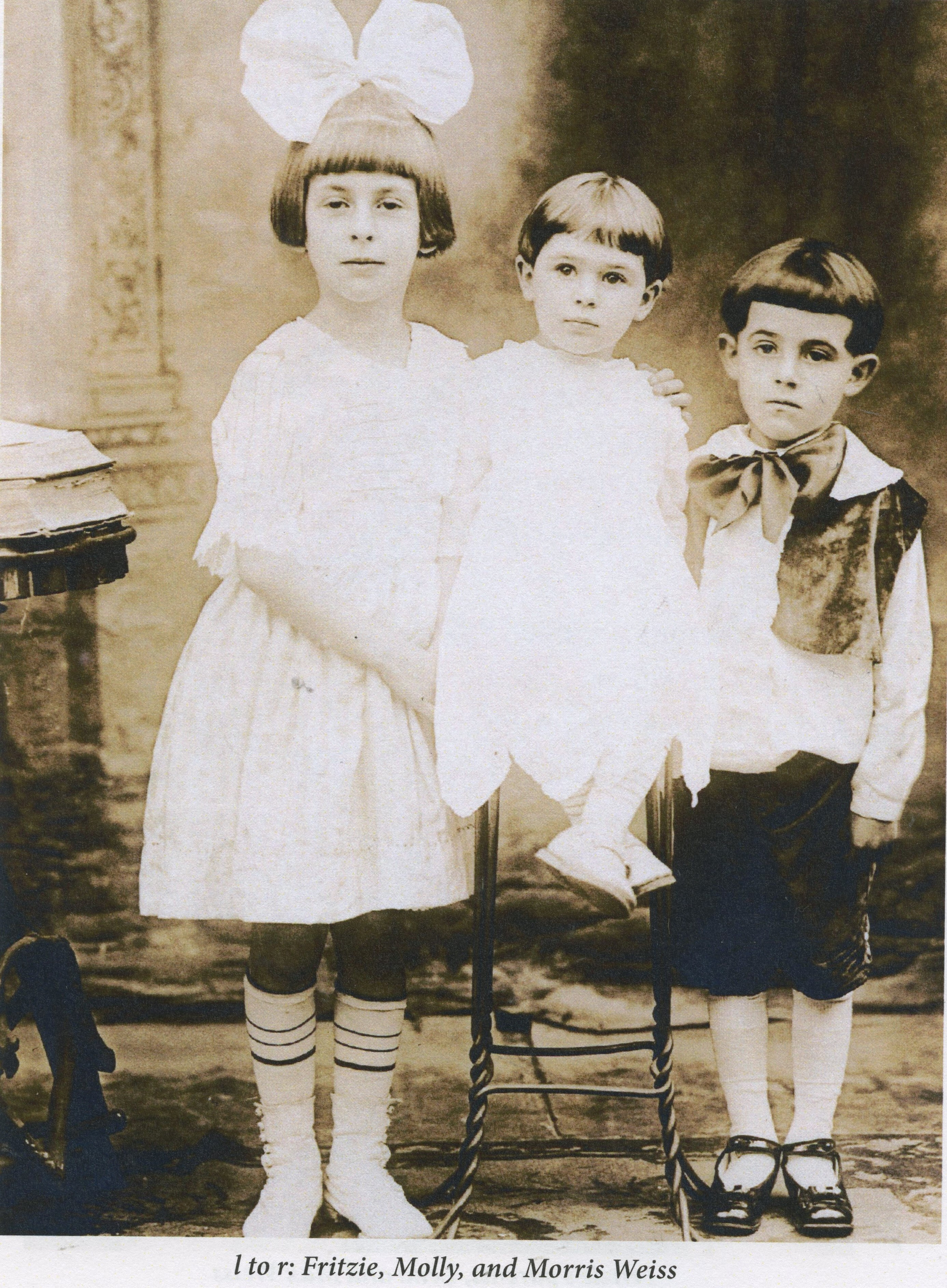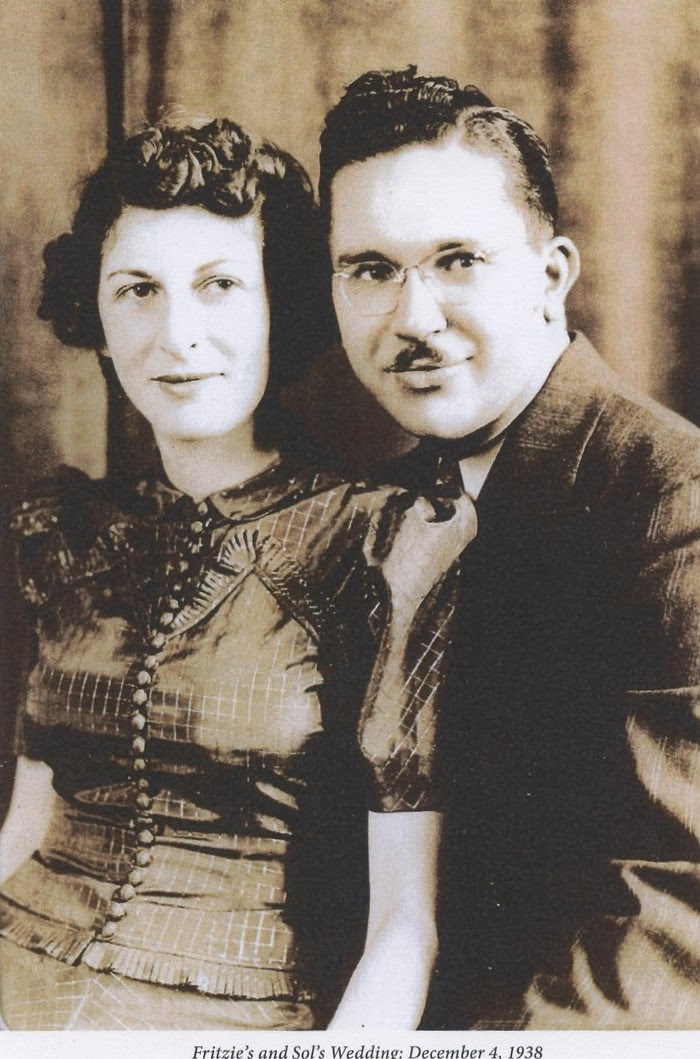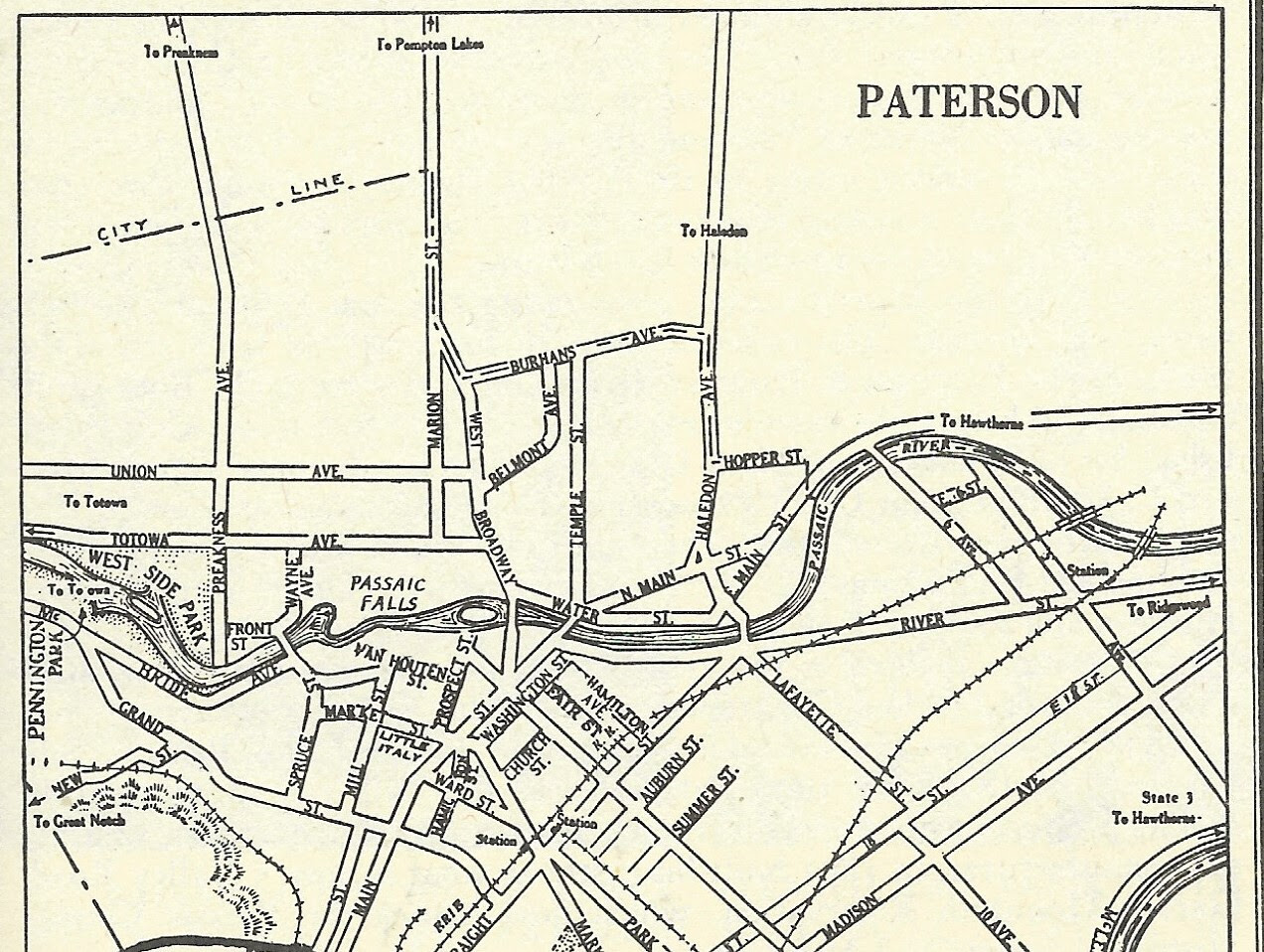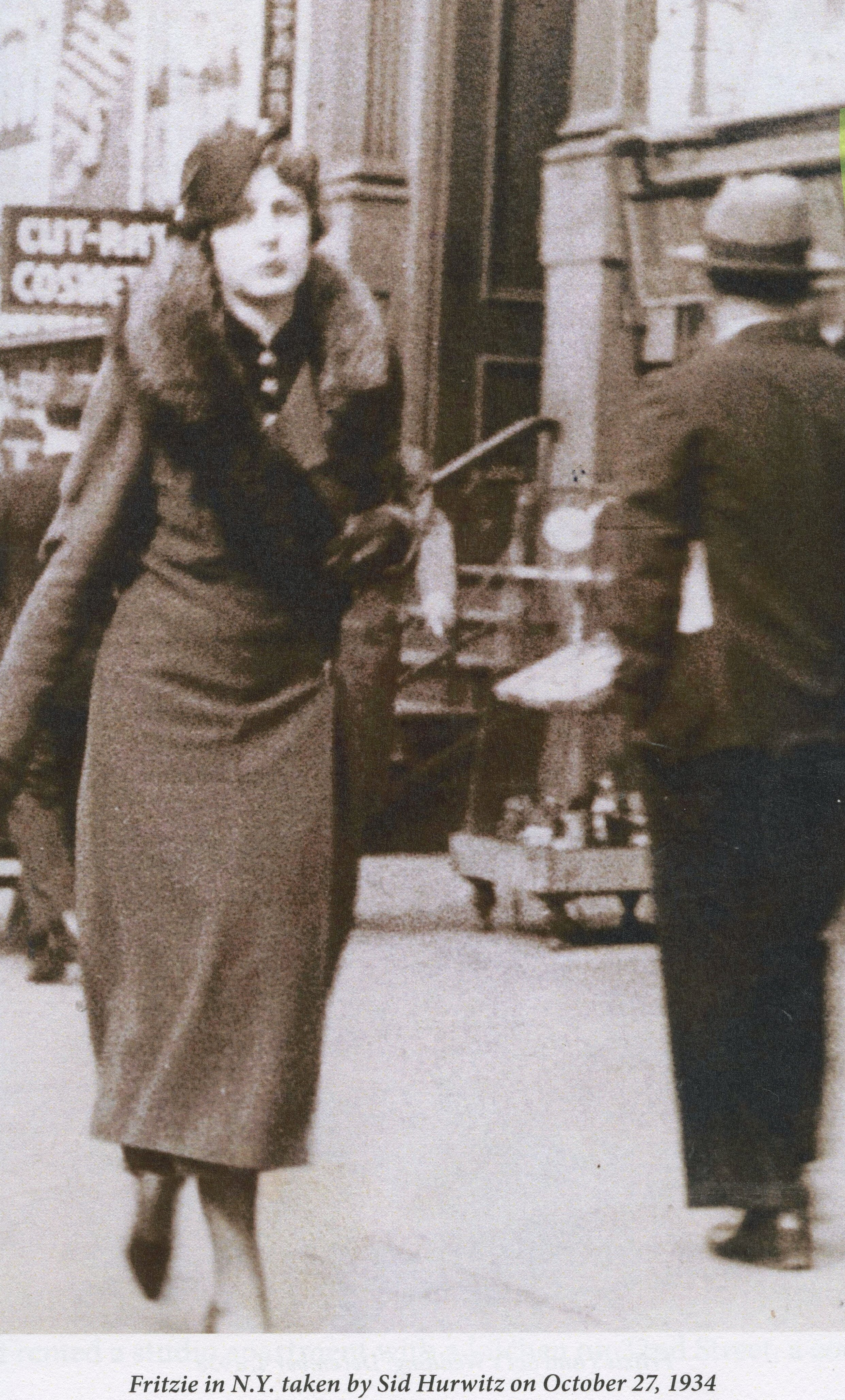Part One: Paterson
This is taken from "The Life of Fritzie Stein," a book in our JHSNJ collection. Leslie (Taner) Rupley created and edited the book based on interviews with her aunt.
Like many of the Eastern European Jewish immigrants of the time [early twentieth century], my father was an experienced weaver and I believe that we moved to Paterson, New Jersey, [from the Bronx] so that he could find work in the silk mills there. Our apartment in Paterson was in the back of a candy store on a corner of Graham Avenue all the way downtown in the Jewish neighborhood. Our Bronx relatives came to Paterson for the Holidays, taking the train across the bridge and then the trolley from the Jersey side down Broadway to get to Graham Avenue. They would come for dinner and stay overnight. Their contribution to the holiday dinner was a huge live fish that they carried across the bridge in a suitcase. I remember the fish swimming in the bathtub and I recall that my mother cooked the fish…
I remember my mother, even though I was only six years old when she went into the hospital [diagnosed with tuberculosis] and seven when she died. I understand from her older sisters that she loved music, and as a single woman she would go without dinner to stand at the back of the Metropolitan Opera House in order to hear the operas.
My mother was home with the three of us [children] until she was sent to a sanitarium in Liberty, New York. She came home in between her stay at Liberty and her trip to the local hospital [in Haledon]. When we visited her in Haledon, we had to wear masks. During the time that my mother could no longer care for us and was in the local hospital, my father sent Molly [sister, age three] to live with family members. Morris [brother, age 5] and I {age 7] were sent into the Daughters of Miriam Home for the Aged and Orphans. Morris and I had been living in the Home for two years after my mother’s death.
In the early years, the Daughters of Miriam Home was on River Street. I attended School Number 10. When we were in the Home, my father came to see us regularly. When my father came to visit, we gathered in a playroom in the back of the house and we just talked and visited. I remember a few times when he took the three of us [children] to the Catskill Mountains for a week or two to stay at a farm in Ellenville. When my sister Molly was about seven years, she made the decision to be in the Home with me and Morris. “I always felt left out because you and Morris were there and I wasn’t with you.”
A turning point occurred in my life during the summer and into October 1931. The feeling of adulthood crept up on me. I don’t think it was an overnight thing, but I came to know that it was up to me to make my decisions. I applied to Drake’s Business School, a business college that offered courses in business and accounting. I went for a brief period during the summer while working during the day and going to school at night, until I found that I couldn’t do both. So I stopped going to college in October and went to live with my dad on Carroll Street. Molly thought that I had made a definitive choice not to go to college, but I don’t know if I did, really. It wasn’t feasible at that point, and I knew how important it was for the family to be together and how I needed to earn money, especially since it was Depression time.
I moved in with my father on Carroll Street in October while Molly and Morris were still in the Home. They came home in February of the following year, after I had been living with my father for several months. At fifteen and thirteen years, Morris and Molly were old enough to care for themselves at home with our father. Morris and I had been in the Home for ten years and Molly for seven years.
"My Life with Sol”
I met Sol when I was about twenty years old and he was twenty-three. Our courtship was a gradual thing. It developed during those years when Sol played pinochle with my father [and other men in the neighborhood]… I guess we were talking about marriage but it seemed to creep up on me. Of course, I really loved him by then. He was an exceptional husband, sentimental and very loving…He was witty and had a sense of humor, which I didn’t.
We moved into an apartment on Tenth Avenue in 1943, our early home with our children {Linda and Allan]. While we lived on Tenth Avenue, we had an active social life between Sol’s friends and mine. There were five couples, and we were very close. We got together one night a week at someone’s house just to visit. I remember learning to dance with someone from the group. There was lots of activity, and so these were really good times for us. During this period, Sol learned the deli business, working at Gelfans’ deli on River Street in Paterson. The Sussman brothers, Ben and Isaac, delivered smoked fish and lox to stores in the area. While out in the delivery truck, they saw a storefront vacancy in Englewood and they decided that it would be a good place for a deli. Englewood didn’t have anything like that, and it was a growing town. It was starting to develop and attract an Orthodox Jewish community. Jewish people were moving in and after some research they made the decision to open a deli....When Allan was about seven years old, we decided to rent a house in Englewood to be closer to Sol’s store.
Part Two: Englewood
We moved to Englewood and rented a house for two years on the corner of Knickerbocker Road. It was actually one floor of a former single family home that had been remodeled for two families. Our first house, at 153 Cambridge Avenue, became ours on May 6,1953. We settled nicely into the Englewood community and our new house is where everybody came, all the children and their friends, and eventually their own children. I have really wonderful memories of those good years.
When Sol left Gelfans’, he became a partner with Bea and Isaac Sussman in the Sussman Brothers Deli. Ben’s wife worked behind the counter as a regular job. I only came in for the holidays to check out the orders when people came to pick them up. When the Sussmans sold their share, the new partners were Sol Stein, Sol Kaplan, and Sam Plotkin. The store,[eventually Sol ‘n Sol Delicatessen on West Palisade Avenue] was a popular spot. The men from Temple Emanuel would drop their children off at school and they would all congregate in the store to buy a half-pound of lox and whatever. …They expanded to include catering. At first the temple was the main client, but soon word got out and they developed an active clientele for home parties with cold platters and hot dishes. They also provided help serving and cleaning up for the parties. Sol’s artistic qualities shined when he arranged the platters, carved the turkeys and put them back on the carcass. Sol Kaplan was the cook. My Sol was a schmoozer. He could really get along with anybody.
By the time we moved to Cambridge Avenue, we started going to the theater and traveling a little bit. Sol always loved music; he had classical music playing, either on the radio or a record. He also loved arias from operas. A local impresario once brought Renata Tebaldi to Englewood…When she sang in the gym at Dwight Morrow High School, Sol was in seventh heaven. I love music as well and have always gone to concerts even after Sol’s death.
During the years when Linda and Allan were in school and afterwards, I was able to contribute to my community through volunteer activities. I juggled my career and volunteerism with shuttling the children from school to their activities. I was active at the JCC as chairman of the nursery school committee. I was on the membership committee of the JCC. The United Jewish Appeal used the JCC office and so I worked for them as well. Sol was an active volunteer during the same time. He was a member of the Englewood Ambulance Corps where he served for twenty-five years. He was their president for a few years. He also was a member of the Lions Club and cooked at their annual Pancake Breakfast. He belonged to B’nai Brith and edited their newsletter.
I was working part time, but I never worked on Tuesday, because that was Sol’s day off. On Tuesday, we spent time together, but we also saved part of the day to take the children somewhere, possibly to a movie. This was the plan so that Sol could spend time with me alone and then spend time with the children too. We did this when Linda and Allan were very young and we were living on Tenth Avenue, and we continued the custom when we moved to Englewood. By then, the children were in school and we might take them out to dinner or somewhere else nearby. We used to go to Holly’s on Route 4, because Sol loved their fried chicken in the basket.
We had lots and lots of parties and many happy times there [in Englewood]. We have pictures of all of my grandchildren and of my nieces and nephews. The children and the grandchildren came for every occasion.
We started to travel little by little when the children were in summer camp. We recalled our courting days in Paterson when we thought we could take a trailer trip in our old age. We never used a trailer, but we took shorter trips. Sol was wonderful to travel with because he was eager to explore and was very outgoing.
Sol died on Saturday, July 1, 1978. We were planning a barbecue on Monday. But a car hit Sol while he was riding his bicycle on Saturday. [Allan died in an accident on August 12, 1979, the year after Sol died] Religion helped when Sol died, but it was harder when Allan and Morris [her brother] died. Those fifteen months from Sol’s to Morris’ death were devastating for me. The communal feeling at the synagogue and the extended family that the members represent was helpful. My religious community [at Temple Emanuel, Englewood] held me together during those months.
In my late eighties, I started to attend Temple Beth El, which is conservative, familiar, and right around the corner from me in Hackensack. It is a good congregation, but my heart is still with Temple Emanuel where Sol and I spent many years together.
Today at ninety-four, I’m fortunate to live to see my grandchildren and even my great-grandchildren with enough awareness to enjoy them. Looking back to examine my life in detail for this book has been both a painful and rewarding experience, as I relived the death of my loved ones and the joys of the wonderful times I had with my family. After all, who can live a life free from pain? The important thing is to notice how these experiences shape us and what we learn from them to shape our own lives. The early death of my mother and my childhood in an orthodox Jewish orphanage most certainly had an impact on the person I became, as did the love of my family and the good fortune to find a devoted and loving husband.
Epilogue: When Fritizie’s daughter Linda donated the book to JHSNJ, she wrote, “This is my mother’s personal memoir as told to my cousin Leslie Rupley. It is the story of a remarkable woman of faith, courage, determination, and great love. It is also the history of immigrant Jews working in the silk mills in Paterson, New Jersey… I decided to share my mother’s story beyond her intended audience because I think it’s a story worth telling.”




